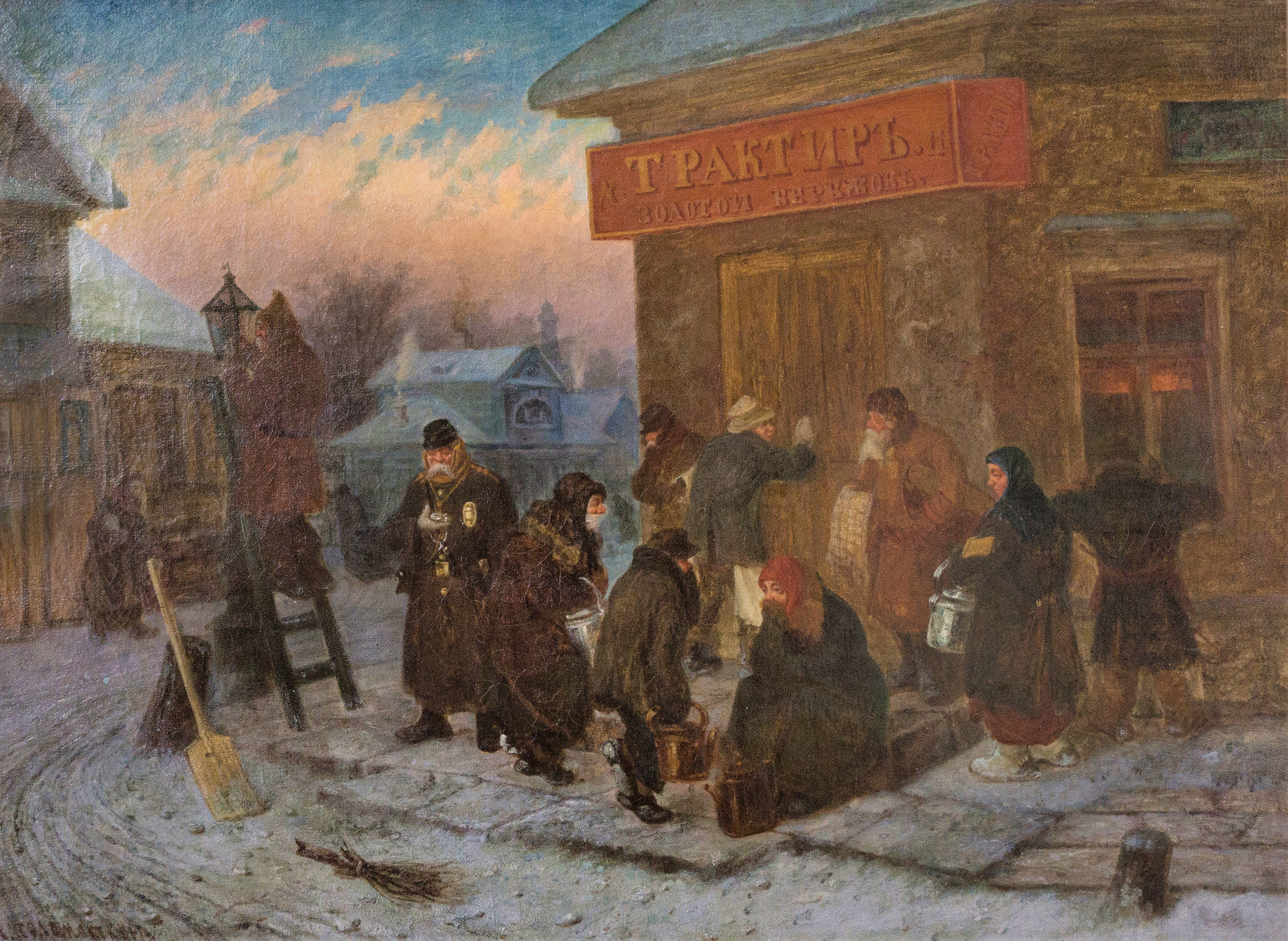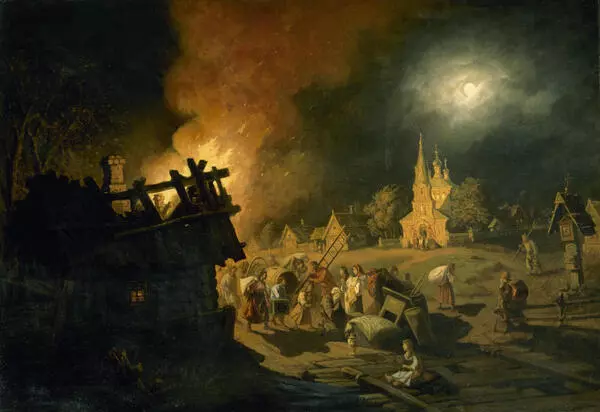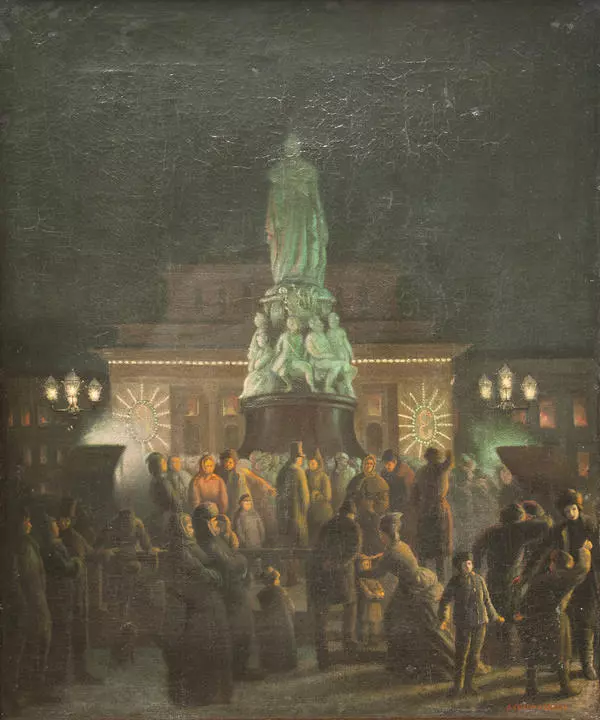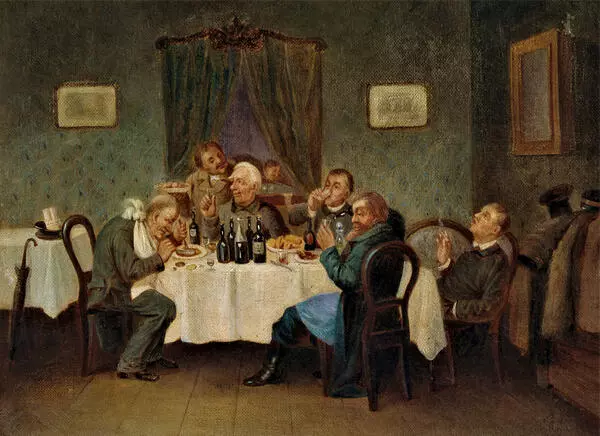In the mid-19th century, a new generation of artists and writers appeared in Russia — people from the lower social layer. They focused on the life of poor people deprived of any civil rights.
Leonid Solomatkin was born into a poor peasant family in the Kursk Governorate. At an early age, the boy became an orphan and had to work hard. By the age of 13, he had already worked as a driver, a shepherd’s assistant, a merchant and traveled through half of Russia. The young man saw deterioration in the villages, poverty in the cities, and the cruelty of human relations. He painted a lot, sketching passers-by, including beggars and vagabonds. His talent enables Solomatkin to enter the Moscow School, and later the St. Petersburg Academy of Arts.
The collection of the Irkutsk Art Museum houses one of the best works by Leonid Solomatkin “Morning at the Tavern”. The painting depicts a tavern on the outskirts of the city, sarcastically or ironically called “Zolotoy Berezhok” (Lovely Golden Shore). It is early in the morning. The lamplighter who climbed up the ladder extinguishes the lantern. The poor city dwellers are crowded at the entrance to the tavern — the artist was well familiar with this type of people.
The policeman is indifferent to the people in the crowd who have been freezing out in the cold. He carefully looks at the clock to make sure that the drinking establishment opens on time — neither a minute late nor a minute early. A gray-bearded drunkard offers to buy a cloth, which he wears slung over his arm like a waiter. Sad women with large metal teapots hiding from the frost, an old man stepping from foot to foot because he is cold, a boy looking impatiently out of the window — all of them, in search of boiling water and warmth, wait on the porch of the tavern that has not opened yet.
The color palette of the canvas stirs emotions: the greenish-brown tones emphasize the severity and despondency of the everyday life in the city. The pale pink colors of dawn enhance the impression of gloom shared by the poorly dressed people. There is no dramatic action in this painting. To enhance the tragedy of each person, Solomatkin makes his models look grotesque: the figures of ordinary people are painted in a deliberately primitive manner.
As far as humor and the power of expression are concerned, Solomatkin can be compared with the Dutch painters, but the artist’s talent was original: he never imitated anyone. Not being a moralist, Solomatkin was able to express sympathy for the poorest residents of the city and to show the unattractiveness and hopelessness of his contemporary life.
The painting entered the museum in 1920 with the collection of the founder of the museum, Vladimir Sukachev.
Leonid Solomatkin was born into a poor peasant family in the Kursk Governorate. At an early age, the boy became an orphan and had to work hard. By the age of 13, he had already worked as a driver, a shepherd’s assistant, a merchant and traveled through half of Russia. The young man saw deterioration in the villages, poverty in the cities, and the cruelty of human relations. He painted a lot, sketching passers-by, including beggars and vagabonds. His talent enables Solomatkin to enter the Moscow School, and later the St. Petersburg Academy of Arts.
The collection of the Irkutsk Art Museum houses one of the best works by Leonid Solomatkin “Morning at the Tavern”. The painting depicts a tavern on the outskirts of the city, sarcastically or ironically called “Zolotoy Berezhok” (Lovely Golden Shore). It is early in the morning. The lamplighter who climbed up the ladder extinguishes the lantern. The poor city dwellers are crowded at the entrance to the tavern — the artist was well familiar with this type of people.
The policeman is indifferent to the people in the crowd who have been freezing out in the cold. He carefully looks at the clock to make sure that the drinking establishment opens on time — neither a minute late nor a minute early. A gray-bearded drunkard offers to buy a cloth, which he wears slung over his arm like a waiter. Sad women with large metal teapots hiding from the frost, an old man stepping from foot to foot because he is cold, a boy looking impatiently out of the window — all of them, in search of boiling water and warmth, wait on the porch of the tavern that has not opened yet.
The color palette of the canvas stirs emotions: the greenish-brown tones emphasize the severity and despondency of the everyday life in the city. The pale pink colors of dawn enhance the impression of gloom shared by the poorly dressed people. There is no dramatic action in this painting. To enhance the tragedy of each person, Solomatkin makes his models look grotesque: the figures of ordinary people are painted in a deliberately primitive manner.
As far as humor and the power of expression are concerned, Solomatkin can be compared with the Dutch painters, but the artist’s talent was original: he never imitated anyone. Not being a moralist, Solomatkin was able to express sympathy for the poorest residents of the city and to show the unattractiveness and hopelessness of his contemporary life.
The painting entered the museum in 1920 with the collection of the founder of the museum, Vladimir Sukachev.










